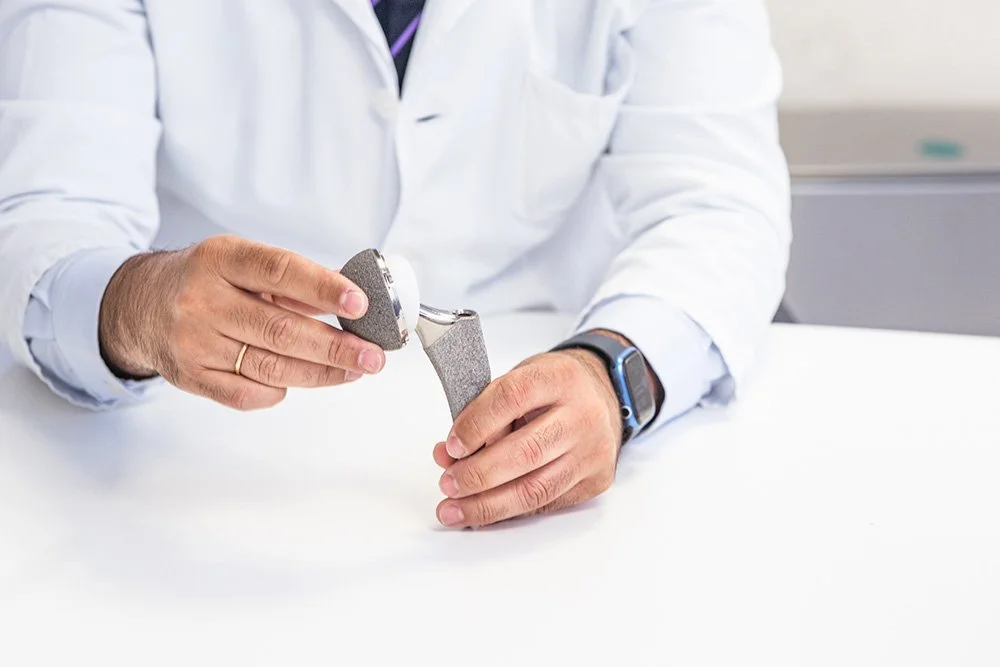What Hip Replacement Material Lasts the Longest? A Guide to Durable Implants
By Dr. Nathan Cafferky, Orthopedic Surgeon at The Steadman Clinic
When considering hip replacement surgery, one of the most common questions patients ask is: What hip replacement material lasts the longest? With modern advances, implants are more durable than ever before, giving patients confidence that their new joint can keep up with their lifestyle for decades.
“The choice of implant is not one-size-fits-all,” explains Dr. Nathan Cafferky, joint replacement specialist at The Steadman Clinic. “We want to ensure patients receive the right combination of safety, function, and longevity.”
The Role of Implant Materials
Today’s implants are designed from highly engineered metals, ceramics, and plastics. Each type of hip replacement material has unique strengths, but the biggest improvements in recent years have come from pairing harder surfaces with advanced plastics that resist wear.
“Ceramic-on-polyethylene implants are well-suited for younger, more active patients seeking longevity and reduced wear,” says Dr. Cafferky. “They are particularly advantageous for those with metal sensitivity.”
Why Ceramic-on-Polyethylene Leads the Way
Traditionally, metal-on-polyethylene (MoP) was the standard, pairing a metal femoral head with a plastic socket. While effective, long-term studies revealed MoP implants had a measurable wear rate, translating to about a 1% risk of failure per year.
“With MoP, we estimate there’s an 80% chance of lasting 20 years,” explains Dr. Cafferky. “That was groundbreaking decades ago, but we now have even better options.”
Enter ceramic-on-polyethylene (CoP), which combines a ceramic femoral head with an advanced polyethylene liner. This pairing has been shown to reduce friction, improve hip replacement durability, and minimize wear debris compared to MoP.
“This is why I predominantly use CoP for most, if not all, patients now,” says Dr. Cafferky. “With modern hard-on-soft bearings, we’ve seen outcomes that point toward even longer implant survival.”
Durability in the Real World
So, how long does this new hip material last? While no implant lasts forever, the data on CoP is promising. Studies suggest these implants may exceed the traditional 20-year benchmark, especially when paired with newer polyethylene liners that resist wear at the microscopic level.
“Ceramic-on-polyethylene has really changed the game,” notes Dr. Cafferky. “It offers the durability of ceramic with the forgiving qualities of polyethylene, and that balance is key for both active and older patients alike.”
Final Thoughts
When it comes to choosing the best hip replacement material, Ceramic-on-Polyethylene is now considered the gold standard for many patients. Its enhanced wear resistance, reduced friction, and compatibility with metal-sensitive patients make it a leading option for long-term outcomes.
“Ultimately, our goal is confidence,” emphasizes Dr. Cafferky. “We want patients to know their implant is built to last, so they can return to the lifestyle they love without worrying about how durable it will be.”
With continued research into new hip material, the future looks even brighter. Each innovation brings us closer to implants that last longer, function more naturally, and provide unmatched hip replacement durability for the decades ahead.

